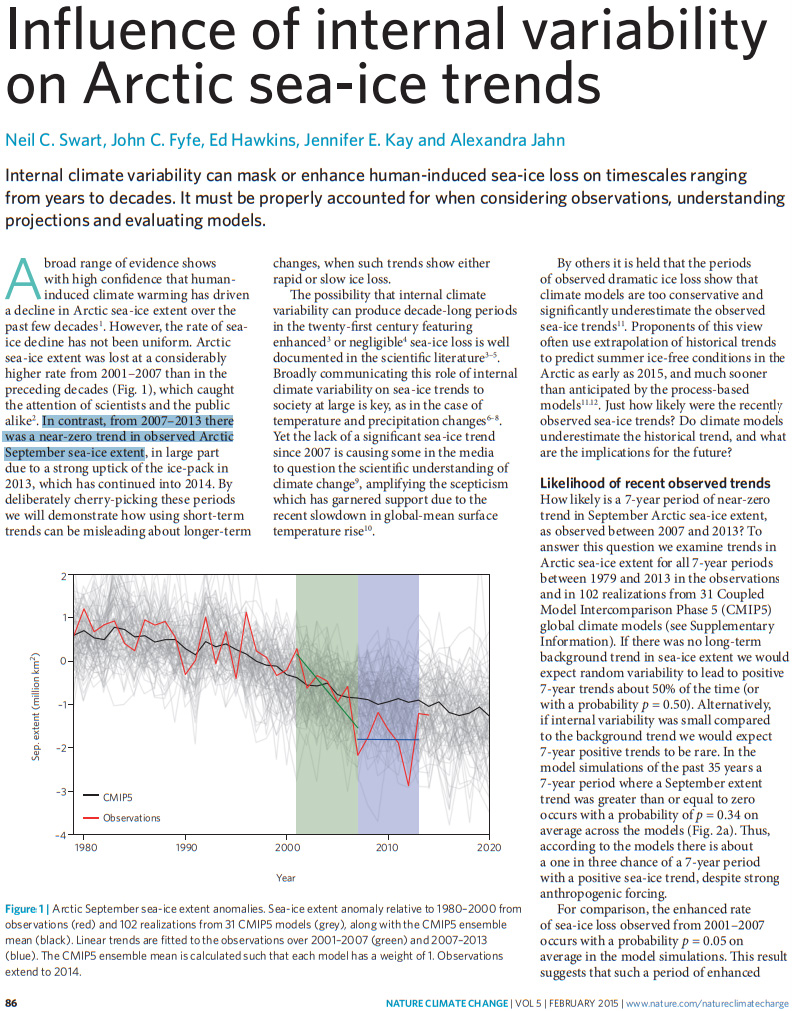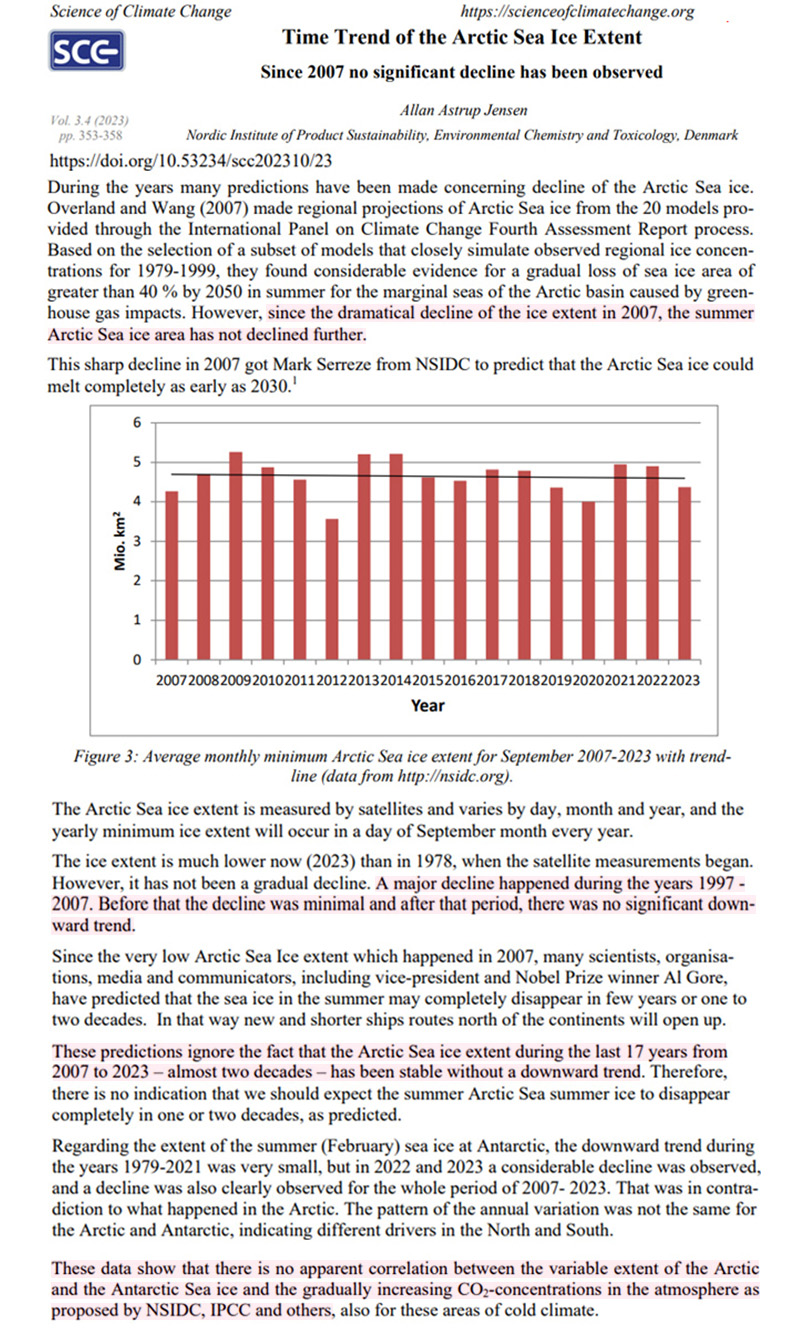“[S]ince the dramatical decline of the ice extent in 2007, the summer Arctic sea ice area has not declined further.” – Astrup Jensen, 2023
Scientists have been using the year 2007 as the starting point for assessing Arctic sea ice trends for nearly a decade. A 2015 study published in Nature Climate Change reported a “near-zero trend” in summer sea ice over the 7 years from 2007-2013.

Image Source: Swart et al., 2015 (full paper)
Another 10 years have now passed and there is still no evidence of a further decline in sea ice.
This is interesting because since late 2007 scientists have predicted Arctic sea ice would decline rapidly as CO2 continued rising – from 385 ppm in 2007 to 422 ppm today. There were 20 models referenced by the IPCC (AR4) projecting a 40% loss of sea ice by 2050 due to an allegedly enhance greenhouse effect associated with anthropogenic CO2 emissions.
But a new study reveals there’s been no declining trend in summer sea ice area over the last 17 years, and “no apparent correlation” between CO2 and sea ice trends.
“The Arctic Sea ice extent is measured by satellites and varies by day, month and year, and the yearly minimum ice extent will occur in a day of September month every year. The ice extent is much lower now (2023) than in 1978, when the satellite measurements began. However, it has not been a gradual decline. A major decline happened during the years 1997 – 2007. Before that the decline was minimal and after that period, there was no significant downward trend.”
“These data show that there is no apparent correlation between the variable extent of the Arctic and the Antarctic Sea ice and the gradually increasing CO2-concentrations in the atmosphere as proposed by NSIDC, IPCC and others, also for these areas of cold climate.”






The models did not include the growth and sudden loss of ice arches.
This has been an analogy to the “when all you have is a hammer, everything
looks like a nail.”
Artic sea ice has been in a downtrend for over 40 years. The downtrend affects the low minths of the year, Deptember, more than the high month of the year.
There is no indication that long term downtrend has permanently ended.
Official Data
http://nsidc.org/arcticseaicenews/files/2023/10/monthly_ice_09_NH_v3.0-1.png
If you make the same graph from 2008 to 2023, the line would be horizontal or near horizontal, i.e. no downtrend.
Another way of saying the same is if you look at the slope change of the “downtrend” — the slope has been steadily becoming less steep since 2008.
[…] Fonte : No Tricks Zone […]